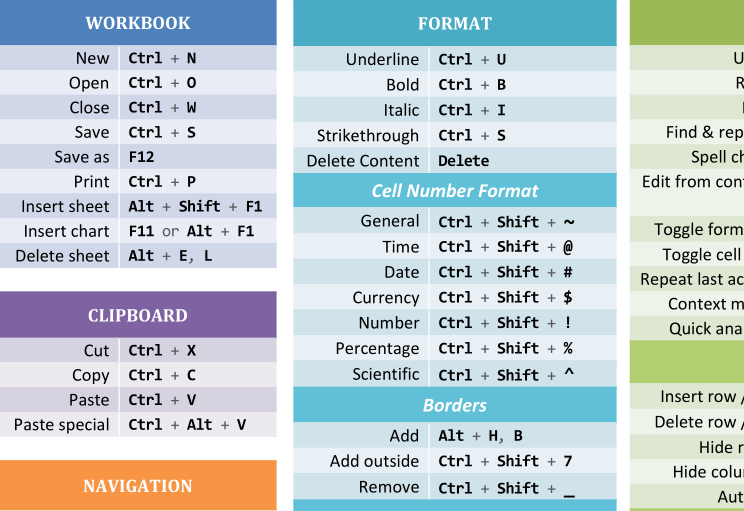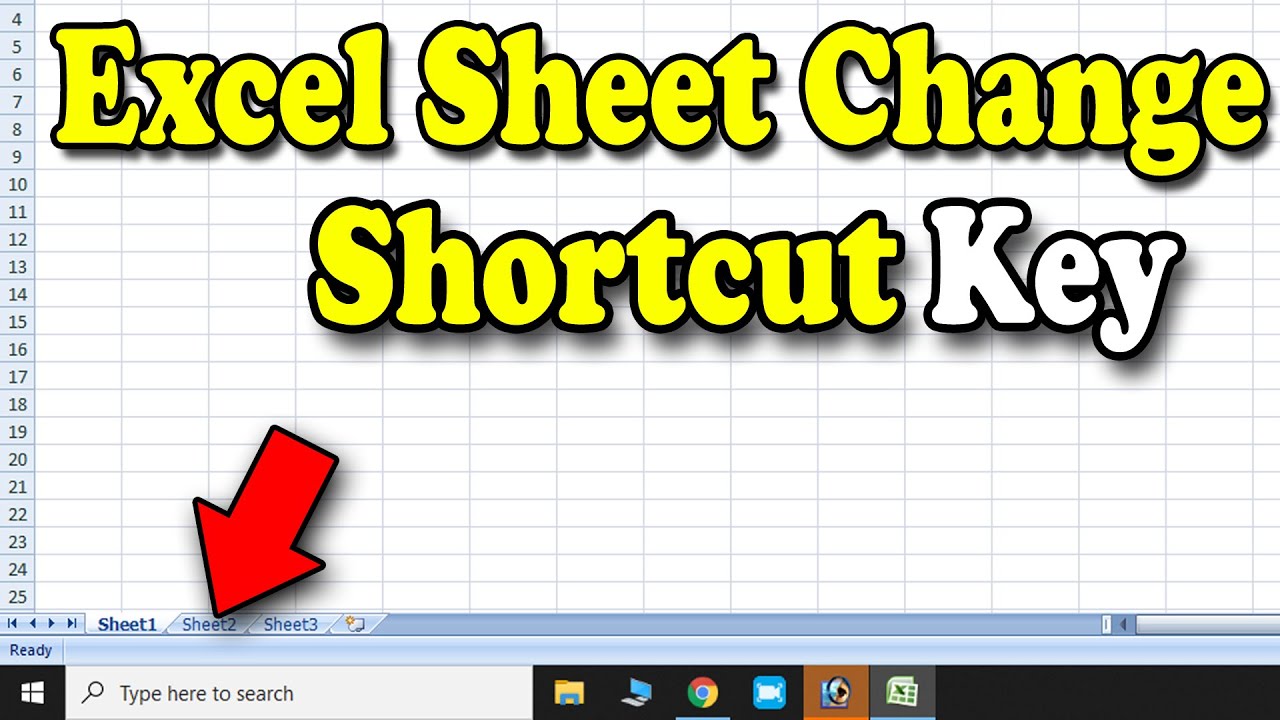Excel Shortcut: Navigate to First Sheet Quickly

When working with multiple sheets in Microsoft Excel, efficiency can drastically change how you interact with the data. Navigating between numerous sheets can slow down your workflow significantly if you aren’t adept at using keyboard shortcuts. Excel, being one of the most powerful tools for data analysis, naturally offers a variety of shortcuts to streamline tasks. Here, we'll explore one particularly useful shortcut for quickly navigating to the first sheet in your workbook, alongside tips to enhance your overall productivity in Excel.
What is the Shortcut for First Sheet?

To swiftly move to the first sheet in your Excel workbook, you can use the following keyboard shortcut:
- Windows: Ctrl + Page Up
- Mac: Fn + Control + ← (left arrow)
🔎 Note: For Mac users, the function key (Fn) is used to access Page Up functionality.
Why Use Keyboard Shortcuts?

Keyboard shortcuts can save a significant amount of time, particularly when:
- You're dealing with numerous sheets or workbooks.
- You need to switch between different data sets or summaries frequently.
- Your workflow requires rapid navigation between sheets.
By using shortcuts, you reduce the need for manual mouse movement, thus reducing physical strain and increasing efficiency.
Other Navigation Shortcuts in Excel

Here are a few more shortcuts to help with navigation:
- Last Sheet: Ctrl + Page Down (Windows) or Fn + Control + → (Mac)
- Next Sheet: Ctrl + Tab (Windows and Mac)
- Previous Sheet: Ctrl + Shift + Tab (Windows and Mac)
Customizing Keyboard Shortcuts

While Excel provides many built-in shortcuts, it also allows for some level of customization:
- Access the Quick Access Toolbar to add commands for which you want to set custom shortcuts.
- Use Macros to automate tasks with specific shortcut triggers, though this doesn't change existing Excel shortcuts but rather adds new functionalities.
Optimizing Your Excel Experience

Beyond navigation shortcuts, here are some tips to enhance your Excel productivity:
- Use Name Manager: Instead of manually navigating through sheets, use the Name Manager to create names for ranges or cells, allowing you to jump to specific parts of your workbook instantly.
- Power Query: Automate data import and cleaning with Power Query, reducing the need to manually sift through data.
- VBA for Complex Tasks: For repetitive or complex tasks, create Visual Basic for Applications (VBA) scripts to automate your workflow.
| Feature | Description |
|---|---|
| Custom Keyboard Shortcuts | Add shortcuts to the Quick Access Toolbar or use VBA for specific macros. |
| Power Query | An ETL tool within Excel for data transformation. |
| VBA | Enables automation of repetitive tasks through scripting. |

Improving your navigation skills in Excel not only speeds up your work but also allows for a more streamlined approach to data management. By mastering shortcuts like the one for moving to the first sheet, you can focus more on analyzing your data rather than navigating through it.
Remember, Excel is more than just a spreadsheet application; it's a powerful tool for managing vast amounts of data with the right shortcuts and features at your fingertips.
Can you customize the shortcut for going to the first sheet?

+
Excel doesn’t allow direct customization of built-in navigation shortcuts like moving to the first sheet. However, you can create macros with their own custom keyboard shortcuts for similar functionality.
What if I forget the shortcuts?

+
It’s common to forget shortcuts, especially in complex software like Excel. You can keep a cheat sheet on your desk or use the help feature within Excel to look up shortcuts.
Are there shortcuts for other common Excel tasks?

+
Yes, Excel is packed with shortcuts for various tasks. From basic cell formatting like Ctrl + B for bold to more complex operations like F2 to edit the active cell, there are shortcuts for nearly every action in Excel.



